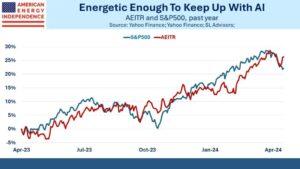In our latest “Talking Markets” podcast, Jeff Schulze, Investment Strategist at ClearBridge Investments and architect of their “Anatomy of a Recession” program, speaks about how the Federal Reserve’s latest moves are impacting the odds of a recession in the United States. Plus, what it would take for the Fed to reverse course and make a dovish pivot, and how much a recession is already baked into the markets.
Click here to listen to podcast
Transcript
Host: Jeff, your update last quarter predicted we’d drop to a yellow caution signal on the ClearBridge Recession Risk Dashboard. So, did that actually happen? And, for those not familiar with the dashboard, put it in context for us.
Jeff Schulze: Yes, it did happen. And the ClearBridge Recession Risk Dashboard is a group of 12 variables that have historically foreshadowed an upcoming recession. And it’s a stoplight analogy, where green is expansion, yellow is caution and red is recession. And in the middle part of June, you had an overall green signal in the dashboard. But given the Fed’s [US Federal Reserve’s] focus on restoring price stability in the US economy, even if it meant a higher unemployment rate and a recession, we decided to foreshadow our expectation for a yellow overall signal in the coming months. And that signal did come at the beginning of August, but you saw further deterioration with an overall red signal coming in early September. Now, in looking at the full economic progression for the dashboard, going from an overall green to a yellow to a red signal in a two-month period, this is, historically, a very short time horizon. But what we found interesting is that this perfectly coincides with the Fed upping their hiking per meeting to 75 basis points. And with the Fed recently doing another 75-basis point hike in September, and expectations for a fourth 75-basis point hike in November, we think that this deterioration is going to continue as we make our way towards 2023.
Host: Alright, so we’re now red, and you’re calling for a recession. In your historical reviews of the dashboard, have there been any instances where the dashboard has called for a downturn that never occurred?
Jeff Schulze: Like any tool, the ClearBridge Recession Risk Dashboard has its strengths and its weaknesses. It’s tended to do a good job at identifying key economic inflection points, but it’s also signaled an overall yellow or caution reading three times and a red or recession reading once when the economy didn’t ultimately enter into a recession. And when evaluating those four periods, there’s a commonality that becomes clear: that a dovish Fed pivot was a key catalyst in continuing to keep that expansion moving forward. And at this current juncture, 1967’s non-recessionary red signal may be the most relevant period to examine. Now, in thinking about overall yellow and red signals that never materialized to a recession, a dovish Fed pivot was instrumental. But similarly, when you look at every Fed tightening cycle since 1955, there’s been 13 of them. Three ended up in a soft landing. But a key commonality in those instances as well was a dovish Fed pivot. Now, the first happened in 1966, which coincides with that non-recessionary red signal we just spoke about, but you had another soft landing in 1984 and 1995 as well. Now, all three of these periods marked robust employment gains, but 1967 is unique in that there was a substantially tighter labor market at that time of that Fed pivot with the unemployment rate being at 3.8% versus 7.3% in 1984 and 5.7% in 1995. Now, this is an important distinction as ample labor market slack in 1985 and 1995 helped prevent inflation from picking up in the years following that Fed pivot, whereas the tight labor market in 1967 contributed to a reacceleration of core CPI [Consumer Price Index] in the three years that followed. In fact, core CPI went from 3.3% at the time of that 1966 pivot to over 6% by the time we hit 1969. And with the tight labor market today reminiscent of 1967, the Fed risks a period of higher inflation down the road if they end up pivoting too early and don’t create enough slack in the labor market. Put differently, a little pain today may be better than more pain down the road. So, when thinking about the dashboard and why non-recessionary yellow and red signals did not materialize to an economic downturn, a Fed pivot is a key consideration.
Host: So, you talked about just how crucial dovish Fed pivots have been in the past. Do you see one possible now, and, if so, what would be the timeline that we would be looking at for a such a pivot?
Jeff Schulze: Well, we think the Fed does not want to repeat the mistakes of not only the soft-landing scenario of 1966, but also the start-stop dynamic that was endured during the 1970s. And because monetary policy never got restrictive long enough, the economy had this yo-yo experience that really continued until then Fed Chair Paul Volcker committed to breaking inflation in 1980. And when listening to a number of FOMC [Federal Open Market Committee] members speak, they want to get policy to restrictive as quick as possible, which would be the equivalent of a fed funds rate north of 4%, and keep it there for a prolonged period of time to ensure that the Fed achieves its goals on inflation on a sustained basis. In fact, John Williams, who is an important voice in the FOMC, wants to get to restrictive for a few years. Now, this is not the type of rhetoric that suggests that a dovish Fed pivot is forthcoming because they understand the risks that are associated with pivoting too early. But a pivot could come if the Fed achieves its goals on inflation and bringing inflation back down to its 2% target. And looking at core CPI, if we assume that you have 0% readings on a month-over-month basis over the next couple of quarters, 2% inflation would not be reached until the middle part of the second quarter of 2023. Now, that may be an unrealistic expectation given how core inflation tends to be more sticky, but if we assume that inflation comes down to the average pace that was witnessed last decade, from 2010 to the end of 2019, the Fed would achieve its 2% target on a year-over-year basis in the later part of the summer next year. Now, even if the Fed does achieve these goals, which may be difficult given how sticky inflation has proved to be over the course of this year, that would be likely too late for the Fed to pivot in order to stave off inflation, given the lagged effects of monetary tightening, and the fact that the markets are pricing in over 1% more hikes as we look out six months on the horizon.
Host: Sounds like odds are against a dovish pivot, at least in your opinion. Ok, let’s talk about the labor market. After a weak job openings print earlier this month, there appears to be some optimism that a soft landing can be achieved. How do you see that? What is the path to that outcome?
Jeff Schulze: Well, a soft landing, although the probabilities have been declining, it’s not a zero probability, and it shouldn’t come as a surprise to anyone that you have some latent economic strength, given the fact that the average fed funds rate that you’ve seen since the start of this monetary tightening cycle has been around 2%. But the path to the soft landing really comes down to three things, in my opinion. First off is a consumer that’s less interest rate sensitive than what you’ve seen historically speaking. And with consumer balance sheets in the best shape in decades, consumer spending may be more resilient than forecasted as consumers get a boost in purchasing power on the back of lower energy prices and lower inflation, especially if wages stay sticky to the upside. So, if you have more purchasing power, consumption should be able to hold up. The second leg to the economic stool and the path to a soft landing really comes down to the labor market. Can we bring down wage pressure in a way that doesn’t increase the unemployment rate in a material way? And a possible way of doing that is bringing down the very elevated level of job openings. Now, the latest release that we got saw job openings drop from 11 million to 10 million, which is a huge drop on a month-over-month basis. And given how unique this cycle has been, there could be an opportunity for job openings to come back down to pre-crisis levels, and that may create lower wage growth without having a material rise in the unemployment rate. Now, this has not been something that’s happened before, but nothing in this cycle has been a repeat of what you would normally associate with an economic recovery. So, I think a cooler labor market on the back of lower job openings is that second leg in the stool. And the third really comes back to companies. Companies may not resort to a full-scale layoff cycle considering that margins peaked only three quarters ago, and on average, since 1960, from peak margin to recession, that timeline has normally been around three years. And with labor being the scarcest commodity of this cycle, companies may be reluctant to let go of their employees in fear of not being able to attract them back when the economy starts to move forward on a more durable basis. So the path to a soft landing, although has been narrowing, is still certainly a possibility.
Host: Let’s talk about what all of this means for investors. Markets tend to be forward looking. With all of the volatility being experienced right now, do you think a recession is already fully priced in?
Jeff Schulze: Although quite a bit of pessimism has been discounted into current market pricing, we believe that the bottoming process will take some time to unfold similar to other recessionary drawdowns. Now, in looking at every recession since 1948, the average length of recession has been 10.3 months.1 However, the average market bottom has occurred 6.6 months after the start of that recession.2 So, markets usually don’t bottom until almost two-thirds of the way through a recession. And in looking at recent [US] labor market data, whether it was the jobs report that we got from September that showed over a quarter million jobs were created, or a very resilient initial jobless claims number, it appears that you have not seen a recession materialize quite yet in the US economy, which means the markets may be likely to continue a period of heightened volatility and maybe some downward pressure until the risks are known more clearly about the path of a recession. Now, in thinking about every bear market, there’s usually two phases to one of those. The first is that you see multiple compression, and the second is earnings expectations get downgraded. And the story of 2022 has really been a story about multiple compression with PEs [price-earnings ratios] moving from 21 times forward earnings down to 15.5.3 However, the second part of a bear market has not played out, which is earnings expectations moving down in a more material fashion. In fact, earnings expectations for the next 12 months earnings have only come down 2% from their peak. And in looking at the last three recessions, historically, that number has been closer to 26% on average.4 Now, even if we strip out the outsized effects that the global financial crisis had on earnings, the typical recession has been closer to around 20%. So, given the fact that earnings have just started to move down, this is likely the next shoe to drop and likely to be priced in the markets as we move through the next couple of quarters.
Host: So, we may not have hit bottom yet, but Jeff, is there some reason for optimism?
Jeff Schulze: There is. Although we think that there’s going to be a period of choppiness and maybe some more downward pressure as earnings expectations move lower, we’re entering a very strong time of the year from a seasonality perspective. In fact, if you look at the presidential cycle, these three quarters that we’re embarking on are the strongest three quarters out of the presidential cycle. Usually, Q4 of year two of a presidential cycle starts off this seasonality, but that follows through to strong performance in Q1 and Q2 of year three.5 In fact, these are the three strongest quarters out of the 16 quarters of the presidential cycle.6 So, as you move through the midterms and you get more visibility on the fiscal environment, markets tend to move higher, and they don’t look back. So, this could negate some of the headwinds that we’re anticipating on the earnings front. But secondly and more importantly, bear markets are a very rare occurrence. They’re usually good times to start dollar cost averaging into the markets because we can never tell when the bottom is going to be put in when you’re going through a recessionary drawdown. In fact, since 1940, if you look at every bear market and the day that you went into bear market territory, which is -20% on the S&P 500, although in this average bear market, you continue to see 15.6% of downside over the near-term, looking out on a six-month time horizon, even with that downward pressure, the markets are up on average 4.1%.7 Looking out on a 12-month basis, the markets are up 11.8%. And the fact that we entered bear market territory over three months ago suggests that we’re probably getting to a point for a really good long-term buying opportunity. So, although we’re expecting heightened volatility, we think, for long-term investors, this will represent a nice entry point as we look out on the horizon.
Host: Certainly a challenging period that we are in, but as you said, that could create opportunity for long-term investors. Jeff Schulze, Investment Strategist with ClearBridge Investments and also the author of Anatomy of a Recession, Jeff, thank you for joining us on Talking Markets.
Jeff Schulze: Thank you for having me.
Host: And thank you for listening. You can get more of Jeff’s thoughts and check out the full Anatomy of a Recession program at Franklintempleton.com. If you’d like to hear more Talking Markets with Franklin Templeton, visit our archive of previous episodes and subscribe on iTunes, Google Play, Spotify, or just about anywhere else you get your podcasts. And we hope you’ll join us next time, when we uncover more insights from our on the ground investment professionals.
—
Originally Posted October 13, 2022 – Anatomy of a recession—Focusing on the Fed
IMPORTANT LEGAL INFORMATION
This material reflects the analysis and opinions of the speakers as of October 10, 2022, and may differ from the opinions of portfolio managers, investment teams or platforms at Franklin Templeton. It is intended to be of general interest only and should not be construed as individual investment advice or a recommendation or solicitation to buy, sell or hold any security or to adopt any investment strategy. It does not constitute legal or tax advice.
The views expressed are those of the speakers and the comments, opinions and analyses are rendered as of the date of this podcast and may change without notice. The information provided in this material is not intended as a complete analysis of every material fact regarding any country, region, market, industry, security or strategy. Statements of fact are from sources considered reliable, but no representation or warranty is made as to their completeness or accuracy.
WHAT ARE THE RISKS?
All investments involve risks, including possible loss of principal. The value of investments can go down as well as up, and investors may not get back the full amount invested. Stock prices fluctuate, sometimes rapidly and dramatically, due to factors affecting individual companies, particular industries or sectors, or general market conditions. Bond prices generally move in the opposite direction of interest rates. Thus, as prices of bonds in an investment portfolio adjust to a rise in interest rates, the value of the portfolio may decline. Treasuries, if held to maturity, offer a fixed rate of return and fixed principal value; their interest payments and principal are guaranteed.
There is no assurance that any estimate, forecast or projection will be realized.
Past performance does not guarantee future results.
Data from third party sources may have been used in the preparation of this material and Franklin Templeton (“FT”) has not independently verified, validated or audited such data. FT accepts no liability whatsoever for any loss arising from use of this information and reliance upon the comments, opinions and analyses in the material is at the sole discretion of the user.
Products, services and information may not be available in all jurisdictions and are offered outside the U.S. by other FT affiliates and/or their distributors as local laws and regulation permits. Please consult your own financial professional for further information on availability of products and services in your jurisdiction.
Issued in the U.S. by Franklin Distributors, LLC. Member FINRA/SIPC, the principal distributor of Franklin Templeton’s U.S. registered products, which are available only in jurisdictions where an offer or solicitation of such products is permitted under applicable laws and regulation. Issued by Franklin Templeton outside of the US.
Please visit www.franklinresources.com to be directed to your local Franklin Templeton website.
Copyright © 2022 Franklin Templeton. All rights reserved.
1. Sources: S&P, FactSet, and Bloomberg. Past performance is not a guarantee of future results. Investors cannot invest directly in an index, and unmanaged index returns do not reflect any fees, expenses or sales charges.
2. Ibid.
3. Current reflects the 2022 Peak-Trough from market close on January 3 to September 30, 2022. Data as of September 30, 2022. Sources: S&P, FactSet, NBER, and Bloomberg. Past performance is not a guarantee of future results.
4. Ibid.
5. Sources: FactSet, S&P. Past performance is not a guarantee of future results. Investors cannot invest directly in an index, and unmanaged index returns do not reflect any fees, expenses or sales charges.
6. Ibid.
7. Sources: S&P, FactSet, and NBER. Past performance is not a guarantee of future results. Investors cannot invest directly in an index, and unmanaged index returns do not reflect any fees, expenses or sales charges.
Disclosure: Franklin Templeton
The comments, opinions and analyses expressed herein are for informational purposes only and should not be considered individual investment advice or recommendations to invest in any security or to adopt any investment strategy. Because market and economic conditions are subject to rapid change, comments, opinions and analyses are rendered as of the date of the posting and may change without notice. The material is not intended as a complete analysis of every material fact regarding any country, region, market, industry, investment or strategy.
This information is intended for US residents only.
Disclosure: Interactive Brokers
Information posted on IBKR Campus that is provided by third-parties does NOT constitute a recommendation that you should contract for the services of that third party. Third-party participants who contribute to IBKR Campus are independent of Interactive Brokers and Interactive Brokers does not make any representations or warranties concerning the services offered, their past or future performance, or the accuracy of the information provided by the third party. Past performance is no guarantee of future results.
This material is from Franklin Templeton and is being posted with its permission. The views expressed in this material are solely those of the author and/or Franklin Templeton and Interactive Brokers is not endorsing or recommending any investment or trading discussed in the material. This material is not and should not be construed as an offer to buy or sell any security. It should not be construed as research or investment advice or a recommendation to buy, sell or hold any security or commodity. This material does not and is not intended to take into account the particular financial conditions, investment objectives or requirements of individual customers. Before acting on this material, you should consider whether it is suitable for your particular circumstances and, as necessary, seek professional advice.











![[Gamma] Scalping Please [Gamma] Scalping Please](https://ibkrcampus.com/wp-content/smush-webp/2024/04/tir-featured-8-700x394.jpg.webp)
![[Gamma] Scalping Please [Gamma] Scalping Please](https://ibkrcampus.com/wp-content/uploads/2024/04/tir-featured-8-700x394.jpg)












